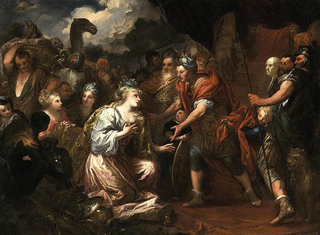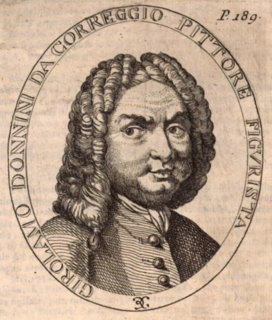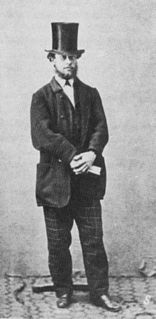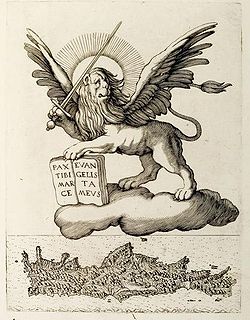
Innocenzio Ansaldi (Pescia, Tuscany, February 12, 1734 - 1816) was an Italian painter and writer on art.

Innocenzio Ansaldi (Pescia, Tuscany, February 12, 1734 - 1816) was an Italian painter and writer on art.
It is not clear that he is related to either Casto Innocenzio Ansaldi (1710 — 1780), a prolific contemporary writer and theologian from Piacenza or Giovanni Andrea Ansaldi (1584 – 1638), a prolific Genoese painter.
Innocenzio enrolled to obtain a classical education at the College of Florence. However, he inclined towards painting and the arts. In Florence, he briefly worked with Father Alberigo de Vellano, a priest who had trained with Ottaviano Dandini and Sebastiano Conca. Patronage with various ecclesiastical and diplomatic figures allowed him to trave through Italy. In 1772, he traveled to Rome, where he became a follower of Anton Raphael Mengs. Returning to Florence and Tuscany, he made paintings of sacred subjects. Among his writings on art are Descrizione delle Pitture, Sculture, ed Architetture delle Citta e Subborghi di Pescia nella Toscano 8vo, Bologna, 1772; a Catalogo delle migliori Pitture, &c, della Valdinievole, printed in the Istoria di Pescia; and a translation in verse of Charles Alphonse du Fresnoy's Art of Painting (Il Pittore Instruito) published, with a memoir of Ansaldi by Canon Moreri, Bologna, 1820., [1] [2]
His works are recondite, erudite, and panegyrical poems about art and artists, full of classical references, but often short on insight.

Sebastiano Conca was an Italian painter.

Jacopo Ligozzi (1547–1627) was an Italian painter, illustrator, designer, and miniaturist. His art can be categorized as late-Renaissance and Mannerist styles.

Filippo Scannabecchi, known as Lippo di Dalmasio, was an Italian painter from Bologna, a son of Dalmasio Scannabecchi.

Ferdinando Galli-Bibiena, surname also spelled Galli da Bibiena or Bibbiena, was an Italian Baroque-era architect, designer, and painter.

Giovanni Andrea Ansaldo was an Italian painter active mainly in Genoa.

Giacinto Gimignani was an Italian painter, active mainly in Rome, during the Baroque period. He was also an engraver in aquaforte.

Pietro Dandini was an Italian painter of the Baroque period, active mainly in Florence.

Girolamo Donnini was an Italian painter of the Baroque period, born in the town of Correggio, Emilia-Romagna. He was a pupil of the painters Francesco Stringa in Modena, and then of Giovanni Gioseffo dal Sole in Bologna, then traveled to Forlì to work with Carlo Cignani.

Telemaco Signorini was an Italian artist who belonged to the group known as the Macchiaioli.

Antonio Randa was an Italian painter of the classicist period, active in Ferrara, Modena, Rovigo, Florence, Comacchio and his native Bologna.

Marco Boschini (1602–1681) was an Italian painter and engraver of the early Baroque period in Venice.

Antonio Salvetti was an Italian architect and painter.

Filadelfo Simi was an Italian painter and sculptor.

Igino Benvenuto Supino was an Italian painter, art critic, and historian.

Jacopo Alessandro Calvi was an Italian painter and art critic who painted sacred and historical subjects in a late-Baroque style.
Benedetto Orsi was an Italian painter of the Baroque period.

Stefano Gherardini (1695-1755) was an Italian painter, prolific in painting genre scenes or bambocciate.
Ansaldi is an Italian surname. Notable people with the surname include:

The Rovelli Altarpiece is a 1539 oil on canvas painting by Moretto da Brescia, which since 1899 has been in the Pinacoteca Tosio Martinengo in Brescia, Italy. Strongly influenced by Titian, it is named after the schoolmaster Galeazzo Rovelli who commissioned it for the church of Santa Maria dei Miracoli in Brescia in 1539, where it remained until being removed in the 19th century and replaced by a copy. Its composition was reused by Moroni in his Mystic Marriage of Saint Catherine in the 1560s.
Enrico Maccioni, Italian painter of contemporary art.